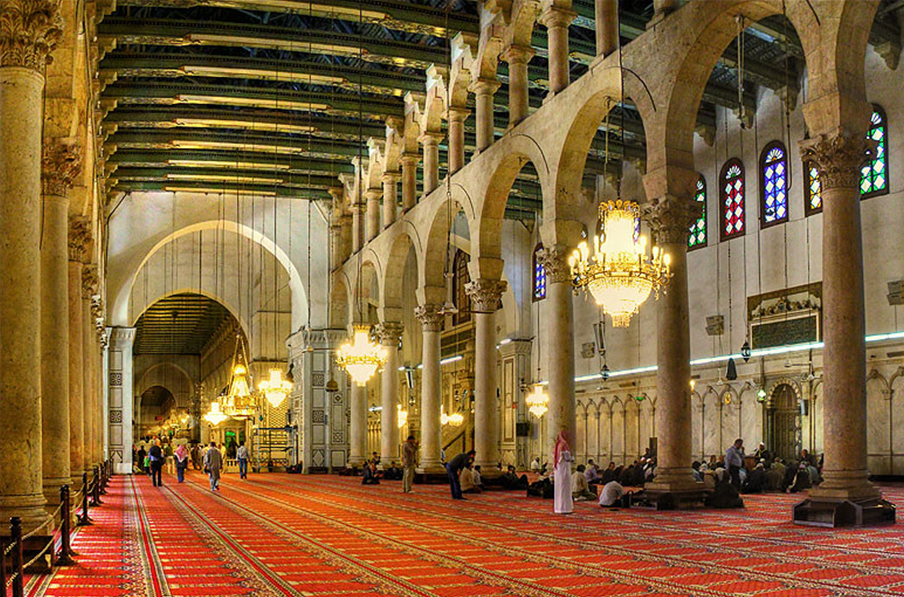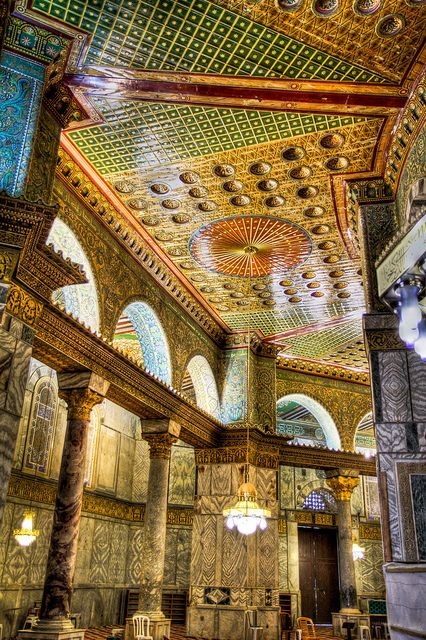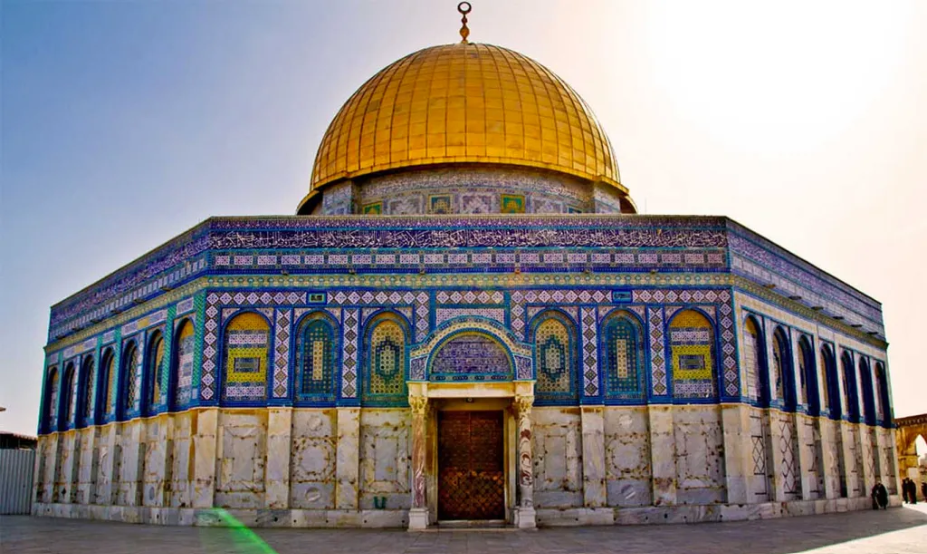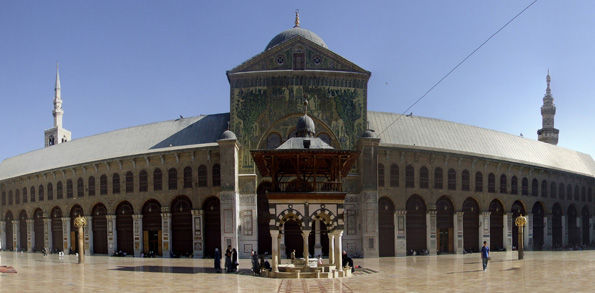Introduction
The Dome of the Rock and the Umayyad Mosque of Damascus are two of the most iconic mosques in the Islamic world. Both are considered masterpieces of Islamic architecture and are important pilgrimage sites for Muslims. This essay compares and contrasts the Dome of the Rock and the Umayyad Mosque of Damascus regarding the interior and exterior features and holiness significance. Additionally, it discusses a brief history, the importance of the two structures, and how they have changed over time.
History and Significance of the Dome of the Rock
The Dome of the Rock is a historic site in the Old City of Jerusalem. Amraei et al. (2019) state that the Dome is the oldest extant Islamic monument and one of the most significant religious buildings worldwide. The structure was completed in 691 CE, making it one of the oldest surviving examples of Islamic architecture. The Dome of the Rock is significant for several reasons. Firstly, it is one of the earliest examples of Islamic architecture and provides insight into the development of this style of architecture. Secondly, the Dome of the Rock is located in the Old City of Jerusalem, a sacred site for Christians, Muslims, and Jews. This makes the Dome of the Rock a symbol of religious tolerance and coexistence. Finally, the Dome of the Rock is a reminder of the rich history and culture of the Islamic world.
History and Significance of the Umayyad Mosque of Damascus
The Umayyad Mosque of Damascus is also one of the world’s oldest and most significant mosques. Huzaifa (2021) states that many Muslims consider the mosque the fourth-holiest site in Islam, after Mecca, Medina, and Jerusalem. The mosque was built in the early 8th century by the Umayyad Caliph Al-Walid I and has been expanded and renovated several times throughout its history. The Umayyad Mosque is significant not only for its age and historical importance but also for its architectural and artistic features. The mosque was built in the traditional Islamic style, with a large central courtyard and a massive prayer hall covered by a gigantic dome (Leal, 2020). The mosque is also home to some important artwork, including a 13th-century-stained glass window and several important Islamic manuscripts. The Umayyad Mosque is one of the world’s most influential Islamic historical and religious sites. It is a must-see for anyone interested in the history and culture of Islam.
Interior of the Two Structures
The Dome of the Rock and the Umayyad Mosque in Damascus are two of the world’s most iconic and recognizable Islamic architectural sites. Both are renowned for their beautiful mosaic patterns, which are integral to each structure’s overall design. There are a few key ways in which the mosaic patterns of these two buildings differ. For one, the Dome of the Rock features geometric patterns exclusively, while the Umayyad Mosque incorporates geometric and figurative elements into its mosaics. Additionally, the colors used in the Dome of the Rock’s mosaics are generally brighter and more vibrant than those used in the Umayyad Mosque’s mosaics, which tend to be more subdued. Despite these differences, the mosaic patterns of these two buildings share several similarities. Both are highly intricate and detailed, and each uses a variety of colors to create a visually stunning effect. Photos 1 and 2 below show the interior structures of the two structures.


Exterior of the Two Structures
The Dome of the Rock and the Umayyad Mosque of Damascus are examples of early Islamic architecture. Both buildings were constructed in the 7th and 8th centuries CE and feature a large central dome. However, the two buildings have several key differences; for instance, the Dome of the Rock is an elementary building, while the Umayyad Mosque is much more ornate. The Dome of the Rock is located in Jerusalem, on the site of the former Jewish Temple. It was built by the Umayyad caliph Abd al-Malik and is considered the first Islamic monument. The building is octagonal, and its central Dome is decorated with Quranic verses. The Umayyad Mosque of Damascus is the largest in Syria. It was built by the Umayyad caliph al-Walid and featured a large courtyard and a rectangular prayer hall.
The mosque’s central Dome is much more gigantic than the Dome of the Rock and is supported by a series of arches. Both buildings are significant examples of early Islamic architecture. However, the Dome of the Rock is more closely associated with the religious history of Islam. At the same time, the Umayyad Mosque of Damascus is more representative of the early Islamic political power. The layout of the two buildings is also different, with the Dome of the Rock having a more centralized and symmetrical design. The below photos, 3 and 4 show the exterior view of the two buildings.


Holiness Interior of the Two Structures
There are many similarities between the Dome of the Rock and the Umayyad Mosque in Damascus, both in terms of their physical appearance and religious significance. Both buildings are considered to be highly holy by Muslims, and both are said to contain the remains of important religious figures. The Dome of the Rock contains the spot where the Prophet Muhammad ascended to heaven, and the Umayyad Mosque is said to contain the head of John the Baptist. These figures are significant in Islam, and their remains are considered holy. Because of their shared religious significance, the Dome of the Rock and the Umayyad Mosque are places of great pilgrimage for Muslims.
Many Muslims visit both places to pray and pay their respects to the crucial figures buried there. The similarities between the Dome of the Rock and the Umayyad Mosque highlight the importance of holiness in Islam. Both buildings are beautiful and impressive, but their religious significance makes them special. For Muslims, these two places are some of the holiest sites in the world, and they are places that offer perfect peace and comfort.
How the Two Key Islamic Structures Changed Over Time
The Dome of the Rock has undergone many changes over the centuries, as it has been damaged and rebuilt several times. The first significant change to the Dome of the Rock occurred in 688 AD when the Umayyad caliph ‘Abd al-Malik ordered its construction (Macaulay (2015). The Dome was built to commemorate the site of the Prophet’s ascension and to serve as a shrine for pilgrims. In 1099 AD, the Crusaders captured the Dome of the Rock and turned it into a church. Crusaders held onto the Dome for almost a century until it was recaptured by Muslims in 1187 AD. After being under Muslim control for a few centuries, the Dome of the Rock was again captured by the Crusaders in 1244 AD (Macaulay, 2015). However, they could only hold onto it for a few months before the Muslims recaptured it.
In 1517 AD, the Ottoman Empire conquered Jerusalem, and the Dome of the Rock came under Ottoman rule. The Ottomans made some minor changes to the Dome, such as adding a crescent to the top of the Dome to symbolize their Muslim faith (Macaulay, 2015). The Dome of the Rock has undergone many changes over the centuries. Today, it remains an important religious site for Muslims and a symbol of the city of Jerusalem.
In my opinion, the Umayyad Mosque of Damascus is a beautiful and historic mosque that has been through many changes over the centuries. According to Ali (2022), the mosque was first built in the 8th century by the Umayyad caliph Al-Walid I. It was initially built as a small, simple structure with a single minaret. Over the years, the mosque has been expanded and renovated many times. The most significant changes were made in the 12th century when the Seljuk ruler Nur ad-Din rebuilt the mosque. The mosque was expanded and embellished, and a second minaret was added. In the 14th century, it was again expanded and renovated by the Mamluk sultan Al-Nasir. The mosque was enlarged and decorated with beautiful mosaics and Islamic calligraphy (Macaulay, 2019). Today, it is one of the most important and beautiful mosques in the Islamic world, and visiting the structures is fascinating.
Conclusion
In conclusion, the Dome of the Rock and the Umayyad Mosque of Damascus are significant Islamic buildings. They serve as mosques, and both were built during the Umayyad period. However, the Dome of the Rock is much older than the Umayyad Mosque of Damascus. The Dome of the Rock is also located in Jerusalem, a holy city for Muslims, while the Umayyad Mosque is located in Damascus, which is not considered a holy city. The Dome of the Rock was built on the site of the former Jewish Temple, while the Umayyad Mosque was not built on a binding site.
References
Ali, Z. (2022). Tracing the history behind the great Umayyad Mosque in Damascus. Middle East Eye. Web.
Amraei, M., Gerawand, M., & Nazari, D. (2019). Reasons for building the dome of the rock by Abdul Malik bin Marwan. 10-Speech of History, 13(29), 185-202. Web.
Ellison, M. (n.d.). Umayyad Mosque, Damascus. Flickr.Web.
Huzaifa, A. (2021). Umayyad Mosque. IslamicLandmarks. Web.
Leal, B. (2020). The Abbasid mosaic tradition and the great mosque of Damascus.Muqarnas Online, 37(1), 29-62. Web.
Macaulay, E. (2015). The Dome of the Rock (Qubbat al-Sakhra).Smarthistory-art history. Web.
Macaulay, E. (2019). The great mosque of Damascus.Smarthhistory-art history. Web.